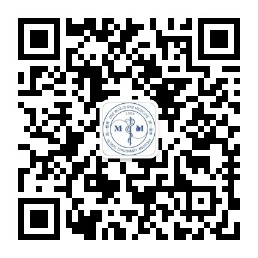目的 探讨“老十针”结合电针治疗中风后气虚便秘的临床效果。方法 选取60例中风后气虚便秘患者为研究对象,按照随机数字表法将其分为对照组和治疗组,各30例。对照组接受基础治疗+便秘常规针刺疗法,治疗组接受基础治疗+“老十针”结合电针干预。比较两组患者大便干硬、排便不尽等症状完全消退时间,干预前及干预后1 d中风症候评分、便秘患者生活质量量表(PAC‑QOL)评分,以及近期(干预后1个月)、远期(干预后3个月)干预疗效。结果 干预后,治疗组患者的大便干硬消退时间、排便不尽消退时间均短于对照组。两组患者的中风症候评分、PAC‑QOL评分均低于干预前且治疗组均低于对照组(均P<0.05)。治疗组近期干预总有效率和远期干预总有效率均高于对照组(33.33% vs.6.67%,93.33% vs.70.00%)(均P<0.05)。结论 “老十针”结合电针治疗中风后气虚便秘患者可显著加快大便干硬、排便不尽症状消退速度,调节患者中风症候,提升近期、远期疗效,改善患者生活质量。
微创医学 页码:123-127
作者机构:1 南宁市第一人民医院,广西医科大学第五附属医院,广西医科大学第五临床医学院,广西南宁市 530000;2 广西中医药大学第一附属医院,广西南宁市 530000
基金信息:国家自然科学基金地区科学基金项目(编号:82060902);广西重点研发计划项目(编号:桂科AB18126085)
- 中文简介
- 英文简介
- 参考文献
Objective To investigate the clinical effect of "experienced ten acupoints" combined with electro-acupuncture in the treatment of post-stroke qi deficiency and constipation. Methods Sixty patients with post-stroke qi deficiency and constipation were selected as research objects, and were divided into control group and treatment group according to random number table method, with 30 cases in each group. The control group received basic treatment + routine acupuncture therapy for constipation, and the treatment group received basic treatment + "experenced ten acupoints" combined with electro-acupuncture intervention.Compared the complete resolution time of symptoms such as dry hard stools and incompletely defecation between two groups of patients, as well as the stroke syndrome score and the Patient Assessment of Constipation-Quality of Life (PAC-QOL) score before and 1 day after intervention, and the short-term (1 month after intervention) and long-term (6 months after intervention) intervention efficacy. Results After intervention, the resolution time of dry hard stools and incompletely defecation in the treatment group was shorter than that in the control group. The scores of stroke syndrome and PAC-QOL in the two groups were lower than those before intervention, which were lower in the treatment group than in the control group (all P<0.05). The total effective rate of short-term intervention and long-term intervention in the treatment group were higher than those in the control group (33.33% vs. 6.67%, 93.33% vs. 70.00%) (all P<0.05). Conclusion The combination of "experienced ten acupoints" and electro-acupuncture in the treatment of patients with post-stroke qi deficiency constipation can significantly accelerate the resolution of symptoms such as dry hard stools and incompletely defecation, regulate stroke syndrome, improve short-term and long-term efficacy, and improve the patients' quality of life.
- ref
- ref
- ref
- ref
- ref
- ref
- ref
- ref
- ref
- ref
- ref
- ref
- ref
- ref
- ref




 注册
注册 忘记密码
忘记密码 忘记用户名
忘记用户名 专家账号密码找回
专家账号密码找回 下载
下载 收藏
收藏
